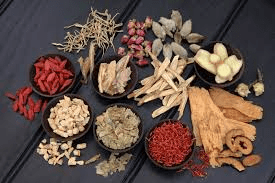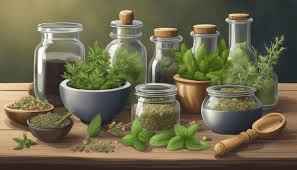Herbal remedies use plants and their extracts to promote health and treat illnesses. This practice has been around for thousands of years and is still popular today. Many people turn to herbal remedies as a natural alternative to conventional medicine. Understanding how these remedies work and their benefits can help you make informed choices about your health.
Historical Use of Medicinal Plants
The use of plants for healing dates back to ancient civilizations. Here are some key points about their historical use:
1. Ancient Cultures: Different cultures have relied on herbal medicine throughout history. Ancient Egyptians used herbs for healing and mummification, while traditional Chinese medicine (TCM) has utilized plants for over 2,000 years.
2. Indigenous Knowledge: Indigenous peoples worldwide have a deep understanding of local plants and their medicinal properties. This knowledge has been passed down through generations and remains vital in many communities today.
3. Development of Herbal Pharmacopeias: In the 19th century, herbal medicine began to be documented systematically. The first pharmacopoeias listed various medicinal plants and their uses, providing a foundation for modern herbal medicine.
4. Influence on Modern Medicine: Many modern medications are derived from plants. For example, aspirin originated from willow bark, and the heart drug digoxin comes from foxglove. This connection highlights the importance of herbal remedies in the development of pharmaceuticals.
Understanding the historical context of herbal remedies can enhance your appreciation of their role in healthcare.
Common Medicinal Plants and Their Benefits

Numerous plants are recognized for their healing properties. Here are some common medicinal plants and their benefits:
1. Aloe Vera: Aloe vera is known for its soothing properties. It can help heal burns, cuts, and skin irritations. The gel from its leaves is commonly used in lotions and ointments.
2. Chamomile: Chamomile is often used as a tea to promote relaxation and aid sleep. It can also help with digestive issues and reduce inflammation.
3. Peppermint: Peppermint is known for its calming effects on the stomach. It can relieve nausea, headaches, and digestive problems. Peppermint oil is also popular for its soothing aroma.
4. Ginger: Ginger is a powerful anti-inflammatory and antioxidant. It can help reduce nausea, especially during pregnancy or after surgery. It may also alleviate muscle pain and soreness.
5. Turmeric: Turmeric contains curcumin, which has strong anti-inflammatory properties. It is often used to support joint health and boost the immune system.
6. Echinacea: Echinacea is commonly used to boost the immune system and help prevent colds and flu. It may also reduce the duration and severity of respiratory infections.
7. Lavender: Lavender is known for its calming scent. It can help reduce anxiety, improve sleep quality, and relieve headaches.
These plants are just a few examples of the many medicinal herbs available. Understanding their benefits can help you incorporate them into your wellness routine.
Read Also: 7 Medicinal Health Benefits of Gynostemma pentaphyllum (Southern Ginseng)
Methods of Preparing Herbal Remedies

Preparing herbal remedies can be simple and rewarding. Here are some common methods for making herbal preparations:
1. Herbal Teas:
Step 1: Start with dried or fresh herbs.
Step 2: Boil water and pour it over the herbs in a cup.
Step 3: Let the mixture steep for 5-10 minutes.
Step 4: Strain the herbs and enjoy the tea.
Herbal teas are a great way to extract the medicinal properties of plants in a gentle manner.
2. Tinctures:
Step 1: Chop fresh herbs and place them in a jar.
Step 2: Cover the herbs with alcohol (like vodka) or vinegar.
Step 3: Seal the jar and store it in a cool, dark place for 2-6 weeks.
Step 4: Shake the jar occasionally and strain the mixture when ready.
Tinctures are concentrated extracts that can be taken in small doses.
3. Infused Oils:
Step 1: Fill a jar with dried herbs and cover them with a carrier oil (like olive or coconut oil).
Step 2: Place the jar in a warm, sunny spot for 1-2 weeks.
Step 3: Strain the oil and store it in a dark bottle.
Infused oils can be used for massage, skin care, or cooking.
4. Salves and Ointments:
Step 1: Start with infused oil.
Step 2: Melt beeswax in a double boiler.
Step 3: Combine the infused oil with melted beeswax (about 1 part wax to 3 parts oil).
Step 4: Pour into containers and let cool.
Salves are useful for topical applications, such as soothing skin irritations.
5. Capsules and Powders:
Step 1: Grind dried herbs into a fine powder.
Step 2: Fill empty capsules with the powdered herbs.
Capsules are an easy way to take herbal remedies, especially for those who dislike the taste of certain herbs.
By mastering these preparation methods, you can create your own herbal remedies at home.
Read Also: 7 Medicinal Health Benefits of Sandalwood (Santalum album)
Safety and Side Effects of Herbal Remedies

While herbal remedies can offer many benefits, it’s essential to approach them with caution. Here are some important considerations regarding safety and potential side effects:
1. Allergic Reactions: Some people may be allergic to specific herbs. Always perform a patch test with topical applications and start with a small amount when consuming a new herb.
2. Interactions with Medications: Herbal remedies can interact with prescription and over-the-counter medications. For example, St. John’s Wort can interfere with antidepressants, while garlic can affect blood thinners. Consult a healthcare provider before combining herbal remedies with other treatments.
3. Dosage Considerations: The potency of herbs can vary. Taking too much can lead to adverse effects. Always follow recommended dosages and guidelines provided by herbalists or product labels.
4. Quality Control: Not all herbal products are created equal. Choose reputable brands that ensure quality and purity. Look for third-party testing to verify that the products are free from contaminants.
5. Specific Health Conditions: Some herbs may not be suitable for individuals with certain health conditions, such as liver disease, pregnancy, or hormone-sensitive conditions. Always seek professional advice if you have concerns.
Understanding these potential risks can help you use herbal remedies safely and effectively.
The Role of Modern Science in Herbal Medicine
Modern science plays a crucial role in understanding and validating the use of herbal remedies. Here are some key points regarding this relationship:
1. Research and Evidence: Scientific studies are increasingly being conducted to explore the effectiveness of various herbal treatments. Research helps identify active compounds, their mechanisms, and their potential benefits.
2. Standardization: Science promotes the standardization of herbal products. This ensures that herbal remedies contain consistent levels of active ingredients, improving safety and efficacy.
3. Quality Assurance: Laboratories analyze herbal products for purity and potency, reducing the risk of contamination or mislabeling. Quality assurance practices lead to safer consumer products.
4. Integration with Conventional Medicine: Some healthcare providers are beginning to integrate herbal remedies with conventional treatments. This holistic approach can enhance patient care, offering a broader range of options for health management.
5. Education and Awareness: Scientific research educates consumers and healthcare providers about the potential benefits and risks of herbal remedies. This knowledge helps individuals make informed decisions about their health.
The collaboration between herbal medicine and modern science enhances our understanding of these remedies and their role in health and wellness.
Integrating Herbal Remedies into Health Practices
Incorporating herbal remedies into your health practices can be beneficial. Here are some tips on how to do this effectively:
1. Educate Yourself: Research the herbs you are interested in. Understand their uses, benefits, potential side effects, and interactions with other medications.
2. Consult Professionals: Speak with healthcare providers, such as herbalists or naturopaths, who can offer guidance on the appropriate use of herbal remedies for your specific health needs.
3. Start Slowly: When trying a new herbal remedy, start with small doses to monitor how your body reacts. Gradually increase the dosage if needed, based on your comfort level.
4. Keep a Journal: Track your experiences with herbal remedies. Note any changes in your health, mood, or symptoms. This can help you and your healthcare provider assess the effectiveness of the remedies.
5. Combine with Healthy Practices: Use herbal remedies as part of a holistic approach to health. Combine them with a balanced diet, regular exercise, and good sleep hygiene for optimal results.
6. Stay Informed: Stay updated on new research and developments in herbal medicine. This will help you make informed choices and adapt your health practices accordingly.
By taking these steps, you can safely and effectively integrate herbal remedies into your overall health and wellness routine.
Herbal remedies offer a wealth of benefits and have a long history of use in promoting health and treating ailments. However, it’s important to approach them with an understanding of their safety, potential side effects, and the role of modern science in evaluating their efficacy.
By staying informed and consulting with healthcare professionals, you can make the most of herbal remedies while minimizing risks. Integrating these natural treatments into a well-rounded health practice can enhance your overall well-being. Embrace the journey of exploring herbal remedies, and enjoy the potential benefits they can bring to your life..
Read Also: Waste Management Startups: The Future of Sustainable Waste Management
Frequently Asked Questions
We will update this section soon.

